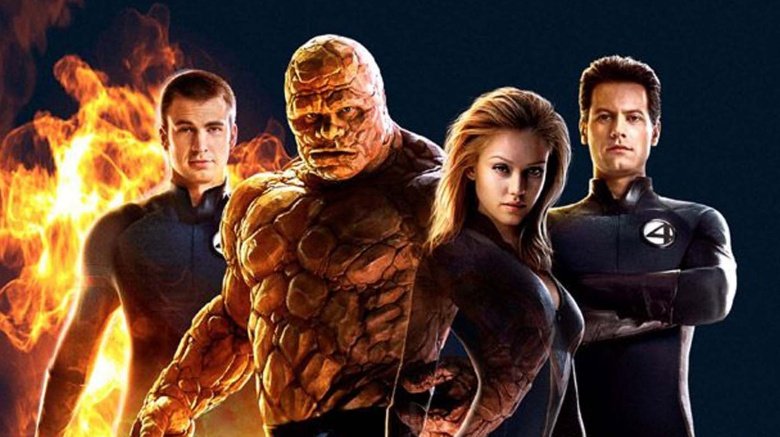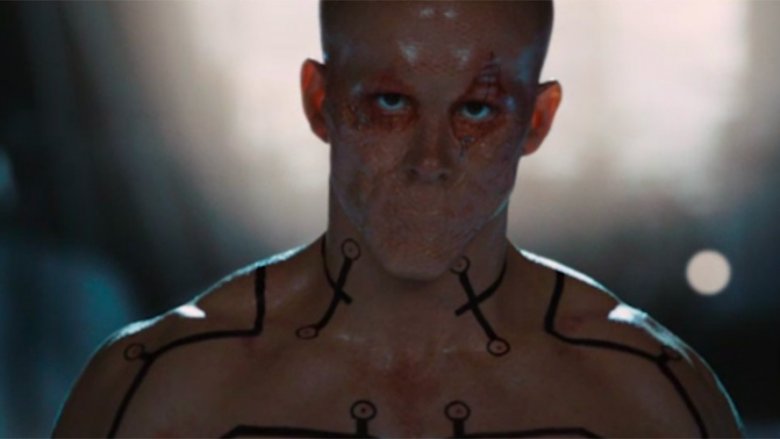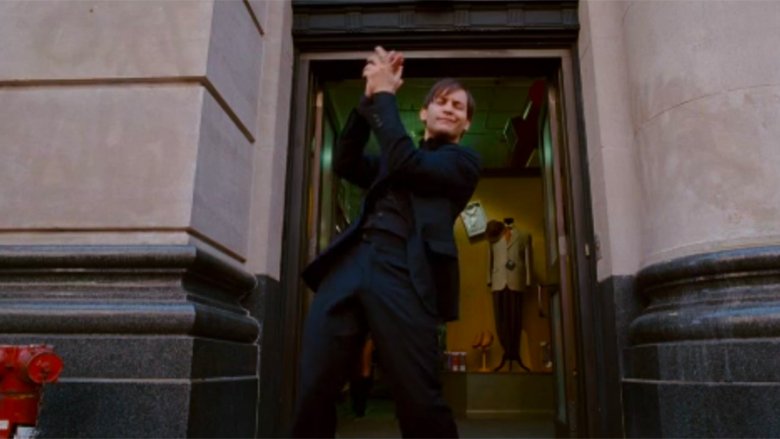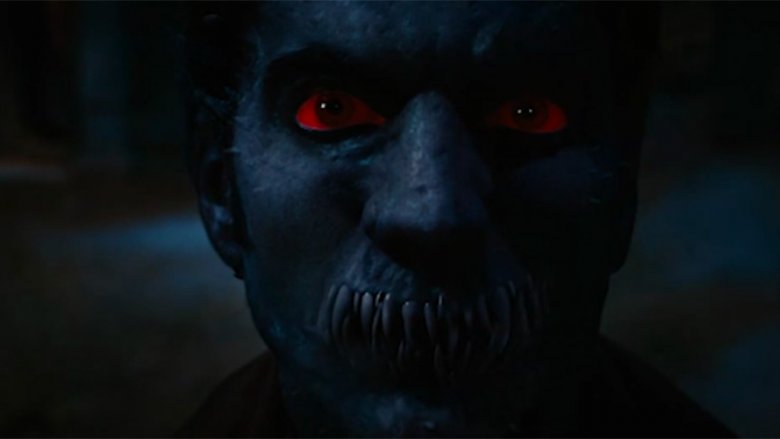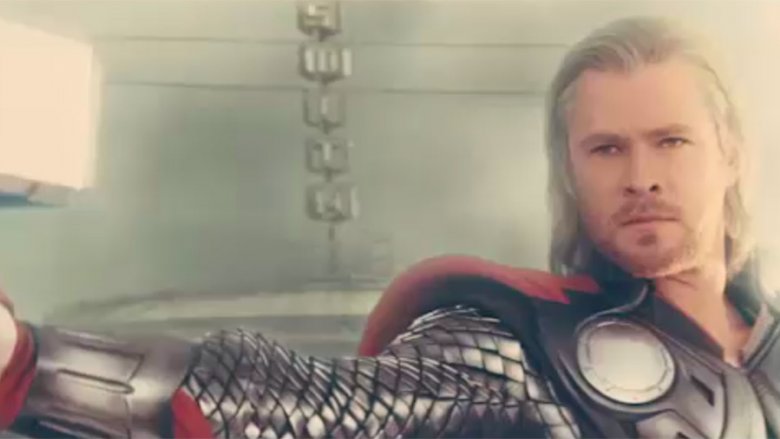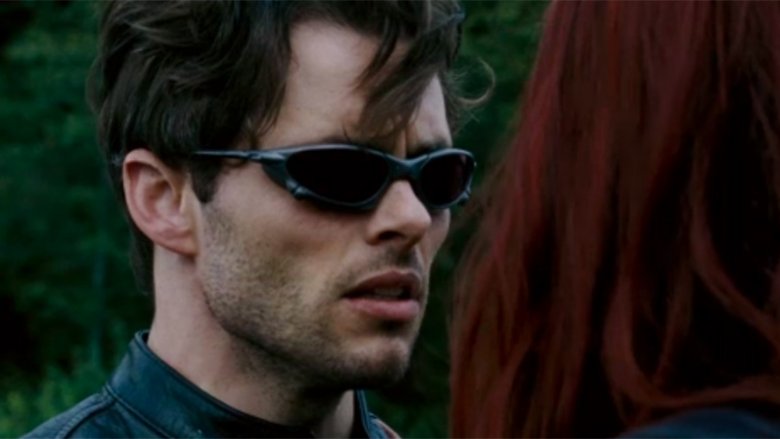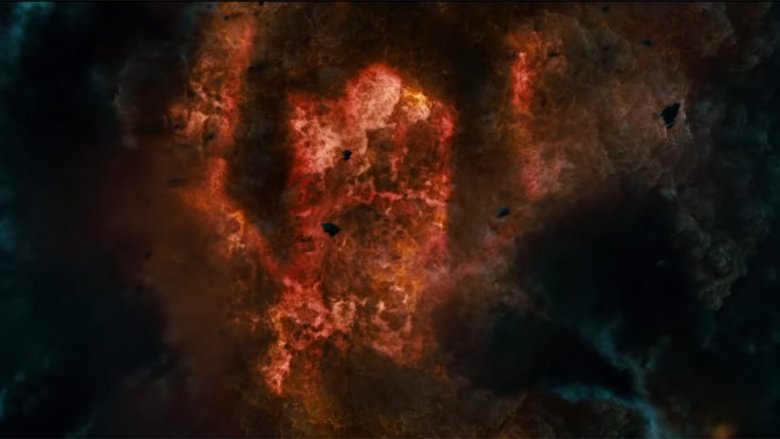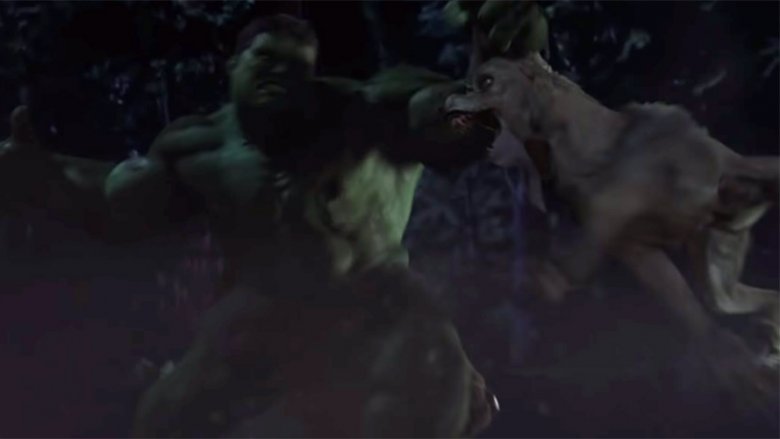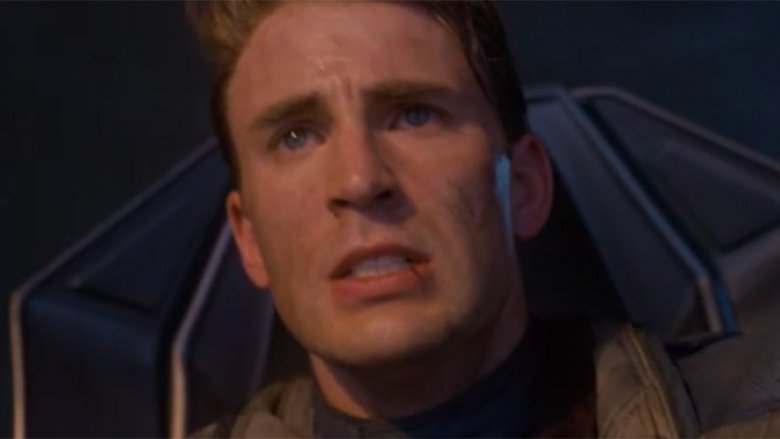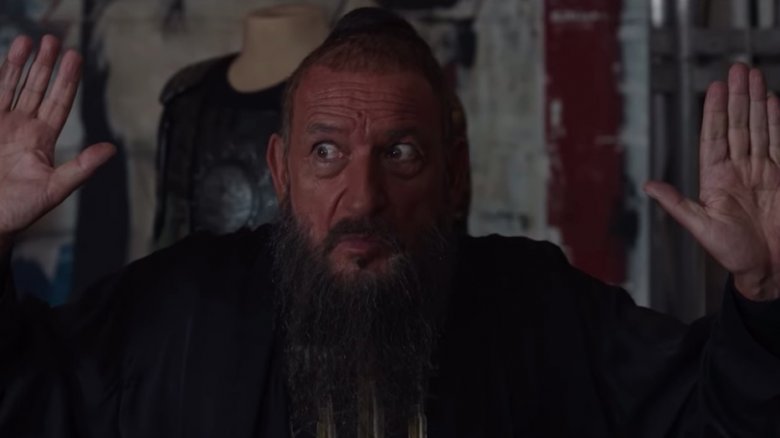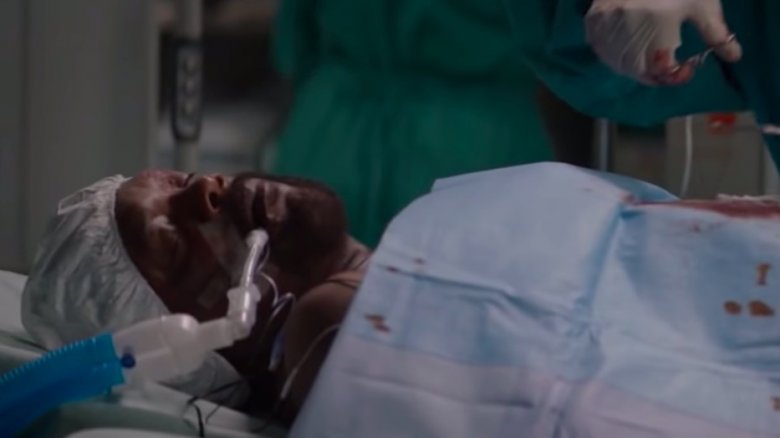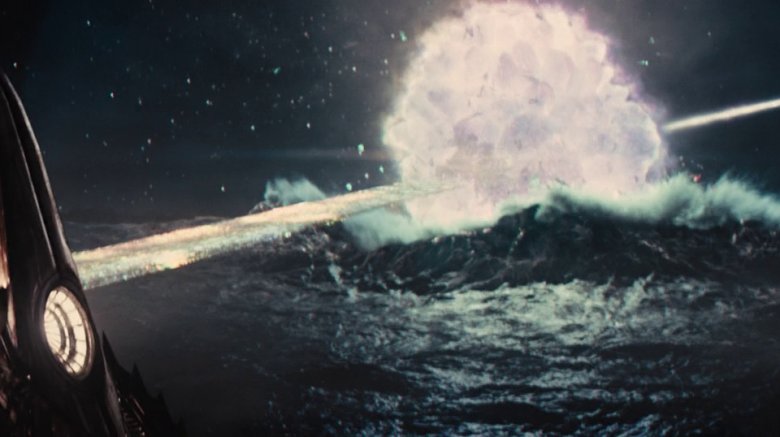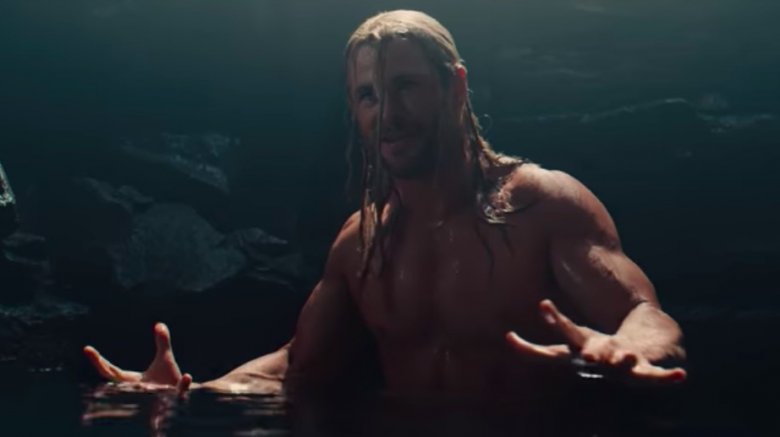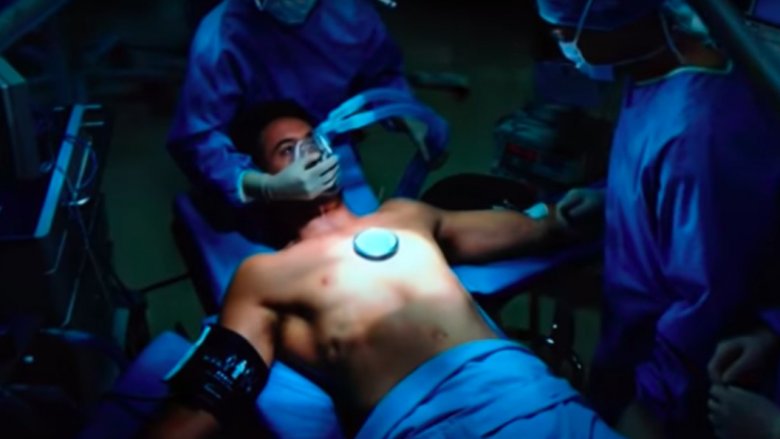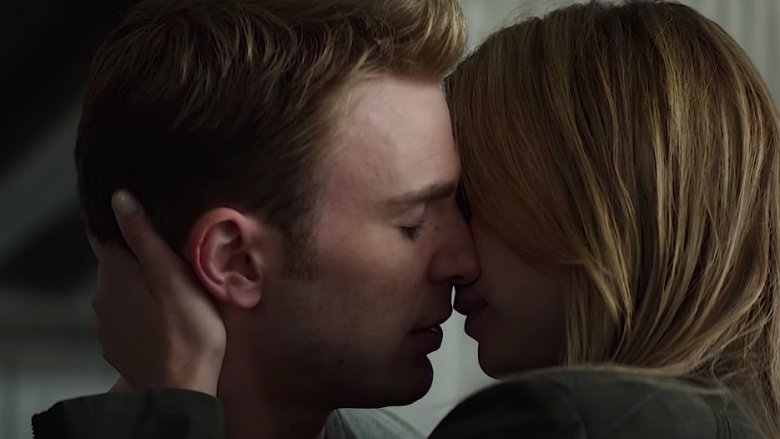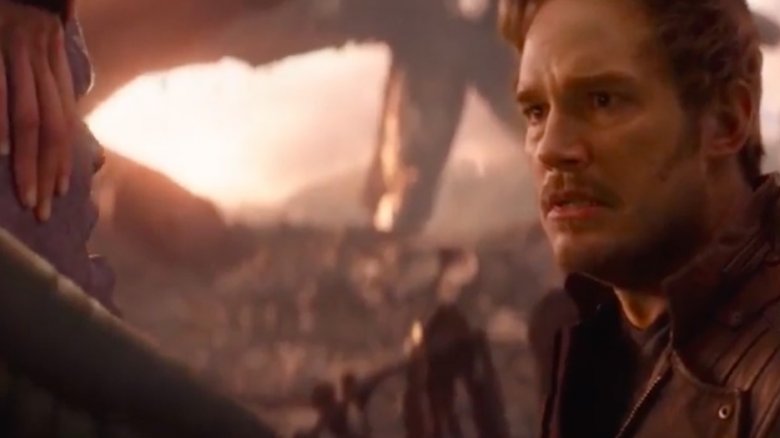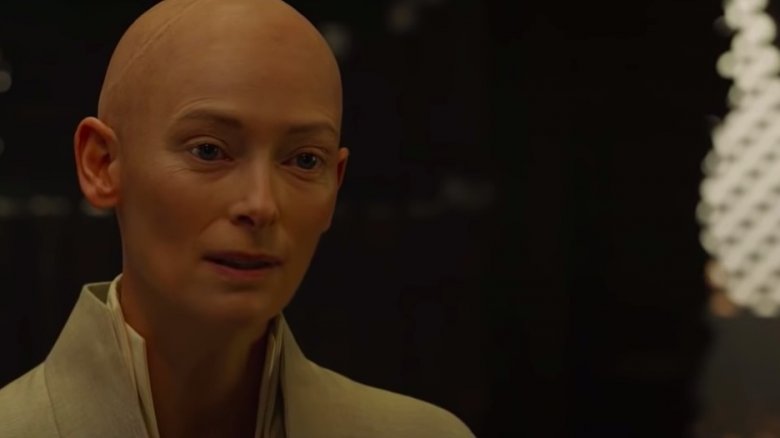Marvel Movie Moments That Outraged Fans
Marvel movie fans have been a pretty patient bunch. They've suffered through way too many Fantastic Four debacles, punishing prequels, a universe divided between multiple studios, and even the fact that the first Marvel hero to really make it to the big screen was none other than Howard the Duck. Even the most patient nerds can't suspend their disbelief forever, and MCU canon or not, we still bear the unforgettable scars from some terrible Marvel movie missteps. Continue reading to open up those wounds again.
X-Men Origins: Wolverine (2009) - Deadpool's final fight
Looking back on it from here in the future, we have ample evidence that casting Ryan Reynolds as Deadpool was a pretty good idea. Unfortunately, that's about the last good idea that X-Men Origins: Wolverine had when it came to everyone's favorite fourth-wall-breaking mercenary.
Playing Deadpool as a handsome, mildly sarcastic member of a special ops team in a sleeveless T-shirt didn't quite line up with the comics, but it's understandable. The scene where he spins his katanas fast enough to deflect bullets and occasionally slice one in half is pretty ridiculous, but it's not so far past giving a guy unbreakable knives that pop out of his fist that we can't forgive it. No, the real problems here came when Deadpool returned at the movie's climax for what might just be the single worst fight in superhero movie history.
Instead of the wisecracking badass that everyone wanted to see, Origins instead gave us a dollar store knock-off version of Baraka from Mortal Kombat in a pair of baggy sweatpants, covered in Sharpie drawings of circuit boards. They managed to miss the point so badly that they literally took away Deadpool's mouth, something that's actually pretty important for a character called "The Merc With a Mouth." For both long-time fans and the people who wanted to see something even remotely cool, this guy was infuriating. The only good thing to come out of it was watching an infinitely better version of Deadpool (also played by Ryan Reynolds) shoot this dork in the head about a dozen times at the end of Deadpool 2.
Spider-Man 3 (2007) - Peter's dance
Spider-Man 3's adaptation of the famous "Alien Costume" saga that gave rise to Venom seemed like it was designed to make fans angry. Rather than standing on its own, it was lumped in as part of a bloated, confusing mess that also included a sad-sack version of the Sandman, a sudden face turn by the second Green Goblin, and a love triangle that tossed Gwen Stacy into the mix and made Mary Jane Watson seem like a petulant, grating nag. That said, there's only one thing that comes to mind when you think of Spider-Man 3's excesses: the dance number.
In the context of the film, it actually makes perfect sense: Thanks to the alien symbiote's influence, Peter Parker has given in to his darkest impulses and become an arrogant jerk, and since Peter himself is a huge nerd, that manifests as a huge nerd's idea of what a "cool guy" is like. He struts through the streets of Manhattan, pointing finger-guns at hot ladies who react in what could charitably be called disgust, and punctuates his sneering with sassy emo hair flips.
The whole point of the sequence is that we're actually supposed to think that Peter's an off-putting, unlikeable dweeb, but there's a problem with that: it worked too well. Audiences found the entire thing to be ridiculous in a way that went way past the intended comedy and wound up being genuinely annoying. To be fair to Sam Raimi, though, nobody could've seen this coming. Who would've thought that anyone coming to see a movie called Spider-Man 3 would want to actually see a version of Spider-Man they could like?
Ghost Rider (2007) - Blackheart's everything
Of all the superheroes who have made it to the big screen over the past 20 years, Ghost Rider seems like the one that would be the easiest to turn into an absolute slam dunk. He's a flaming skeleton who rides a motorcycle and beats demons to death with chains! Not only is it a concept that sells itself, and not only does it seem like the perfect way to follow up on the supernatural adventure of Marvel's first big movie hit, Blade, it's also a visual that's a whole lot easier for audiences to rally around than, say, a talking raccoon with a machine gun who pals around with a monosyllabic tree.
And yet, 2007's Ghost Rider and its 2011 sequel, Ghost Rider: Spirit of Vengeance, are just flat-out bad. It's hard to say why — Nicolas Cage is a big enough fan of the character that he has a tattoo of Johnny Blaze, and he certainly has the manic energy to make it work. They even got the filmmakers behind Crank 2: High Voltage to make the sequel, and that's a movie that straight up ends with Jason Statham on fire beating people up and flipping off the camera. Everything should work, but in practice, it's all a huge mess.
Nothing encapsulates that better than the movie's version of Blackheart. Rather than the gigantic, spiked giant of the comics, who looks like the Predator made a baby with Gengar from Pokémon, the movie Blackheart is just ... a guy. He's basically Ivan Ooze with a worse dental plan, and he gets knocked out with a single quick Penance Stare at the end of the film. All this is meant to set up the real villain for the next movie: Blackheart's demonic dad, Mephisto, who is, of course, almost completely ignored in the sequel.
Thor (2011) - Hammer heal/wardrobe change
Whether it's the comics or the films, the Marvel version of Asgard exists as this strange intersection of advanced technology and godly magic, where actual Frost Giants and enchanted hammers can exist alongside elves with spaceships and towering laser cannons. The best part of that is that it lets those stories get away with a whole lot without the audience having to question how it all happens. The worst part, though, is that sometimes they try to get away with a little too much and we end up having to ask those questions anyway.
Example: the climax of the first Thor movie, where the God of Thunder is nearly beaten to death by the armored, laser-faced Asgardian dreadnaught known as the Destroyer. This is apparently enough of a sacrifice to fulfill Odin's requirement of worthiness, so the Allfather decides to go ahead and give Thor his hammer back ... which instantly puts him back to full HP, fills up his Limit Break gauge, and throws in a costume change for good measure.
Listen, we're willing to accept that getting his godly power back fixes up his relatively fragile human form, but throwing in a shave and a haircut without skipping a beat is the kind of one-step-too-far plot contrivance that starts to unravel the whole thing. Of course, in the canon of the comics, Mjolnir was able to transform disabled doctor Don Blake into a lightning-throwing athlete wizard, but in the movie, he's already in the body of the hunkiest Hemsworth. It probably would've been more satisfying to see Thor taking on the bad guys in jeans and a T-shirt, if only because all this is just a little too convenient.
X-Men 3: The Last Stand (2006) - Death of Cyclops
If you saw X-Men 3: The Last Stand and didn't realize you'd seen the death of one of the most important characters until about an hour after it happened, there's good news: You're not alone. Cyclops, the leader of the X-Men, goes out in the worst possible way, to the point where we don't even get to see it.
It doesn't make it any better that the whole setup for this is mopey even by the X-Men's soap opera standards. Understandably a little depressed after Jean Grey's apparent death at the end of the great but bizarrely titled X2: X-Men United, Scott Summers heads back to the site where she died in order to do some loud, laser-eyed mourning. Shockingly — for everyone who doesn't know that Jean's codename is "Phoenix" and that this is basically her entire deal — Jean returns from the dead and embraces Scott, who doesn't know that she has been possessed by the all-powerful, world-shattering Dark Phoenix. They make out for a minute, Scott's face gets all weird, and then we immediately cut to Professor X having an Excedrin headache this big.
And that's it. The founding leader of the X-Men is done and dusted, presumably exploded to death offscreen. Looking back on it, it's even weirder, but at the time, it felt less like a necessary plot point and more like the filmmakers were punishing James Marsden for taking a role in the Superman movie that was coming out a month later.
Fantastic Four: Rise of the Silver Surfer (2007) - Galactus cloud
The first Fantastic Four movie sucked, but they still made a sequel because if you have a dozen eggs that are about to go bad, you might as well use 'em to make an omelet no one wants. This time around, Fan2stic promised the arrival of the Silver Surfer, and with him came something that should've been huge. See, the Surfer isn't just a fan-favorite character in his own right — he's also the Herald of Galactus. The Surfer's appearance on a planet is quickly followed by the arrival of the unfathomable, unstoppable Devourer of Worlds.
In the comics, the original Galactus story from 1966 was a groundbreaking game-changer, ramping up the scope of the Marvel Universe and providing the blueprint for major events that's still in use today. It's a masterpiece from Stan Lee and Jack Kirby, and established the Fantastic Four as the kind of team that can deal with the threats that other heroes can barely even imagine. In the movie, though, it might be the dumbest and most laughable thing to ever appear in a superhero movie — and yes, we're including the playground fight from Daredevil in that statement.
Rather than going with the classic depiction of Galactus as a gigantic humanoid decked out in cosmic armor, director Tim Story decided to lose the comic booky silliness of that design. Instead, the Devourer was ... a big hungry cloud. That's not exactly an upgrade, even with the fleeting moments where it vaguely resembles the iconic bad guy, but if you know your comics, it actually gets worse. See, in Marvel canon, Galactus isn't actually a humanoid — he's so far beyond our understanding that every species just interprets him as an incomprehensibly big version of themselves. So what does it say about us here in the real world that we had to see Galactus as a gigantic space fart?
Hulk (2003) - Hulk dogs
There are two kinds of people in this world: those who hated the ridiculous, hulked out dogs that showed up in Ang Lee's 2003 Hulk movie for being the dumbest thing in the world, and those who also thought they were the dumbest thing in the world, but kinda loved how stupid they were.
Statistically speaking, you're probably in the former group. To be entirely fair, Hulk had some pretty interesting elements. If nothing else, it went all out in virtually every aspect, from attempts to capture the visual style of comics to a couple of rampages that are still pretty fun to watch today, even if they kinda look like cutscenes from a PS2 game. Unfortunately, that's also the movie's downfall. It crams so much into a single film — including a tacked-on plot about Bruce Banner's dad, who is also the C-list villain Absorbing Man for some reason — that a movie where the Hulk suplexes a helicopter and tries to eat a missile ends up being a boring slog where you only remember the weirdest bits.
Thus: Hulk dogs. For the guy who will end up having a fistfight with a tank battalion, a deranged poodle trying to smash its way into a car isn't exactly a huge threat, and it also makes it pretty hard to take anything else that happens even remotely seriously. Instead, the goofiest piece of the film winds up being the one thing that everyone remembers, and considering that it involves the tonal whiplash of our hero snapping the jaws of house pets, it's not in a good way. There is a silver lining, though. While it was far from being the best superhero movie — it wasn't even the best superhero movie released in the summer of 2003 — it's also not the worst Marvel movie where the good guys have to fight a cloud at the end.
Captain America: The First Avenger (2011) - Down with the ship
Most comic book movie moments that enraged the fans sparked their controversies by deviating from the comics. For Captain America: The First Avenger, though, it's because they did exactly what happens on the page. We already knew going in that Cap had to wind up being frozen in suspended animation for a few decades so he could show up to lead the Avengers without having to dump a ton of old-man makeup onto Chris Evans to make him the world's sexiest octogenarian. It's the way that it happens.
For the film, it's not enough for Cap to sacrifice his life to save America from being bombed by Hydra. He also has to suffer a very personal loss that turns the whole scene into a weapons-grade tearjerker. His promise to meet Peggy Carter for a dance, made while they both know that he's flying to his death, is heart-wrenching, and — hey, wait a second. They had autopilot in 1945, right? And even if they didn't, couldn't he just use his belt to tie down the control stick? Or maybe use his super-strength to smash up the instruments and crash the plane that way? Or any of a dozen other ways that would've given him time to bail out?
Even if you weren't wondering that during the scene in question, Cap's final line of the film — "I had a date." — is so brutally emotional that we're angry that he didn't figure out a better way to save the world. Sure, it was necessary, and we appreciate Steve's heroic sacrifice, but Peggy waited so long and ... and ... and we just don't know what to do with these emotions!
When the super villain Mandarin turned out to be a drunk actor
There are two kinds of Marvel fans — fans of the movies and fans of the comics. There's some crossover between them, but generally speaking, most fans tend to passionately love one version of the Marvel universe significantly more than the other one. So nothing pissed off fans of the Iron Man comics quite so much as the infamous "Mandarin twist," which was either a piece of brilliant, inspired comedy or just writer/director Shane Black's way of telling comic book fans that everything they've ever believed in has been a stupid joke, haha joke's on them.
It wasn't even so much that Iron Man's longtime comic book nemesis, a descendant of Genghis Khan who has been menacing our hero since 1964 — turned out to be a drunk British guy who'd been hired to draw attention away from the real villain. It was the fact that it seemed like they'd been taunting comic book fans with the Mandarin plot all along. The footage that debuted at Comic-Con showed Mandarin's infamous ten rings, there was the weird shot of the Captain America tattoo on the back of Mandarin's neck, and then ... lame. Black was kind of just dismissing comic book fans altogether in order to create some humorous twist that reviewer Miguel Robles said was "not a twist, it was a deception, and one that left a bad taste in the mouths of comic book lovers everywhere." Nice work, Marvel.
Nick Fury's super-lame fake death
Everyone knows that death in a comic book or fantasy or sci-fi franchise is not necessarily final. There always seems to be some technology or magic or time-travel thingie that can bring a beloved character back from the grave, so there's really no point in grieving until we've watched the cremation or ... something. Pepper Potts, for example, fell to her death at the end of Iron Man 3, but actually wasn't really dead, probably because of some magical jade egg thing from Goop or something (actually it was the Extremis serum, but that's almost as dumb as a jade egg from Goop). And then Loki died but didn't die and Agent Coulson died but didn't die, but none of those "deaths" were quite as lame as the "death" of Nick Fury, who faked his own death because reasons.
According to the Huffington Post, Fury's fake death in Captain America: The Winter Soldier was supposed to root out disloyalties within SHIELD and therefore preserve the organization, which frankly seems more like something an evil villain would do than something a brilliant and charismatic leader would have to do, but whatever. Fury achieved the deception with the help of Tetrodotoxin B, a substance Bruce Banner developed to help him control the Hulk. Fury took the drug and his heart slowed down and everyone went "oh no he's dead," and moviegoers went "lame," and that's just about the whole dumb story.
Apparently destroying the Bifrost was not that big a deal
First, Thor travels to Earth on the Bifrost, the bridge that connects Earth and Asgard. Then he has a completely chemistry-free romance with Natalie Portman's Jane Foster, and we're all supposed to feel super sad when he has to destroy the Bifrost in order to save Jotunheim, which has the obvious side effect of making sure he'll never see Jane Foster again to continue his boring, totally unconvincing romance with her. That's not the bit that really outraged fans, though. The bit that outraged fans happened in the very first Avengers movie when Thor totally just showed up on Earth without using the Bifrost, thus making his whole great sacrifice a non-issue.
Loki explains the plot hole like this: "With Bifrost gone, how much dark energy did the All-Father have to muster to conjure you here?" Oh. So basically the Bifrost was never really that important and its destruction was just an excuse for Thor to get out of his relationship with Jane Foster without hurting her feelings.
According to Screen Rant, director Joss Whedon made no excuses, saying he wasn't exactly "proud" of how the Bifrost problem was dealt with in the first Avengers film. Infinity War does eventually de-lamify the premise somewhat, when we see Heimdall conjuring up some Bifrost mojo to send Hulk back to Earth in the opening prologue. But it's not a whole lot better, and that was after years of fans having to live with the first, much more stupid explanation.
That super weird cave pool thing in Age of Ultron
Speaking of dumb scenes that involve everyone's favorite Asgardian, there was that one totally nonsensical scene in Age of Ultron in which Thor goes into a cave and gets all sexy and shirtless and then emerges with Knowledge. Basically, he attends the University of Cave Pools and comes out with a master's degree in awesomeness.
So what is the deal with this weird scene? On an episode of The Empire Film podcast, Director Joss Whedon said there was more to it before the scene got edited down to its final confusing form. According to Polygon, an early cut of Avengers: Age of Ultron was 3 hours and 15 minutes long, which by the way is also the length of Titanic, and everyone knows how too-long that movie was. Before the final cuts were made, Thor's weird little cave pond storyline also included some stuff with the Norns, female entities from Norse mythology. In the original cut, the Norns possessed Thor and Thor said some stuff to Erik Selvig, and then test audiences were all, "What the heck is all this weird Norse mythology stuff that doesn't belong in an Avengers movie," and then the editors dutifully cut all that out, thus leaving us all with a super-confusing version of the weird little cave pond storyline. So there you go, mystery solved. Sort of.
When Tony Stark just got heart surgery and fixed everything
Everyone agrees, the arc reactor is like Tony Stark's deal. His whole deal. The point of the reactor is that it powers the electromagnet that keeps shrapnel away from Tony Stark's heart, and the Iron Man thing is just a bonus. So that's cool, but fans have always kind of wondered why Stark didn't just have the shrapnel removed. Because by Iron Man 2, the reactor is actually poisoning him so you would think that at that point he'd go find himself a surgeon.
Now, the idea that shrapnel could be inoperable is not fiction. In 2008, the East Anglian Daily Times discussed a former soldier with a similar problem — shrapnel near his heart that doctors didn't dare remove. But the MCU and real life are not the same place, and the fact that Tony Stark ended up having heart surgery just one Iron Man movie after the arc reactor nearly killed him kind of upset a lot of fans, who were left wondering why he didn't just do that in the first place.
According to Screen Rant, the Chinese cut of the film explained it better than the cut we saw in the West — evidently, there was only one surgeon in the entire world who could do the job. That's a decent explanation for the long delay, but still, Marvel could have done a better job of, you know, telling us that earlier in the franchise.
How soon is too soon to put the moves on your ex-girlfriend's great niece?
No one can deny that it would be sucky to be frozen in the Arctic for decades only to be unfrozen and discover that everyone you ever cared about is either dead or way, way older than you are. So can anyone really blame Captain America for putting the moves on Sharon Carter just days after the death of former flame Peggy Carter? Because Peggy was, like, old.
As it turns out, yes, there were people who could really blame Captain America for his gross act of questionable yuck. According to the Hollywood Reporter, there were a lot of outraged fans who were not cool with the onscreen kiss between Sharon and Steve Rogers. The actor who played Peggy was not really cool with it either — she told IGN that Peggy would not just "be turning over in her grave," she would also "inject herself with the blue serum and become a super villain. She'd break out of her coffin and ground [Sharon]. ... Then she'd kick Steve's ass as well." So no super-strong feelings or anything.
Fans echoed the sentiment with a whole social media movement #GiveCapABoyfriend because at least that would be romance that made sense. Alas, it probably won't happen.
The time when Star Lord killed half the universe
Those horrible last moments of Infinity War can be traced back to a single event. It's one of those scenes you watch the first time and you want to hurl your popcorn and Milk Duds angrily at the screen but you can't because you're in a theater and everyone will get mad at you. And then you see it a second time and you still want to hurl your movie snacks because deep down inside you think maybe if you just do it this time you might actually get the character to change his mind. Alas, though, nothing you throw at the screen, no matter how delicious, will ever stop Star Lord from punching Thanos in the face, thus making it possible for him to escape Mantis' control and foil the heroes' plan to take the gauntlet. Bad Star Lord.
That's not quite the same as a plot hole or bad writing. Fans weren't outraged at the writers or the director, they were outraged at Star Lord, who was pretty much single-handedly responsible for the movie's upsetting conclusion.
The film's directors defend Star Lord, though. He's suffered an awful lot, and you can be upset by the way things went down but you can't really blame him for reacting to the news that Thanos murdered the woman he loved. "He's a flawed character," director Joe Russo told ET. Which basically means, he's a human character. Give the guy a break. Also, remember, Doctor Strange said this was the route that would work, and you know because there's a sequel happening.
When the Ancient One turned out to be a bald white lady
Comic book fans were thrilled to learn that Marvel cast Benedict Cumberbatch as Doctor Strange, but they weren't especially thrilled to learn that Marvel had also decided to take some gender and ethnicity liberties with one of the comics' most iconic actors. In the comics, the Ancient One is a Tibetan male, but in the movie she's a white female, albeit a strange-looking bald one.
Anyone who did not know about Marvel's casting decision was a bit taken aback the moment the character first appeared on screen, and some fans even expressed outrage at what they perceived to be whitewashing. But Marvel actually had a perfectly rational reason for not sticking with the original. According to Geeks, the film's co-writer, C. Robert Cargill called the character a "racist stereotype." Okay, but that could be fixed in other ways than just making the character white. He also explained that his Tibetan origins would have almost certainly upset the Chinese government, which still doesn't acknowledge the independence of the much-smaller nation. That might have led to a boycott from "one of the biggest film-watching countries in the world," and you can't have that. So the Ancient One was reinvented as a Celtic female because Celt power and also girl power. It doesn't really explain the whole bald thing but you can't have it all.
